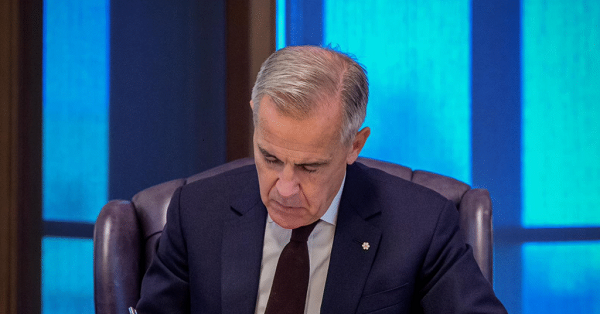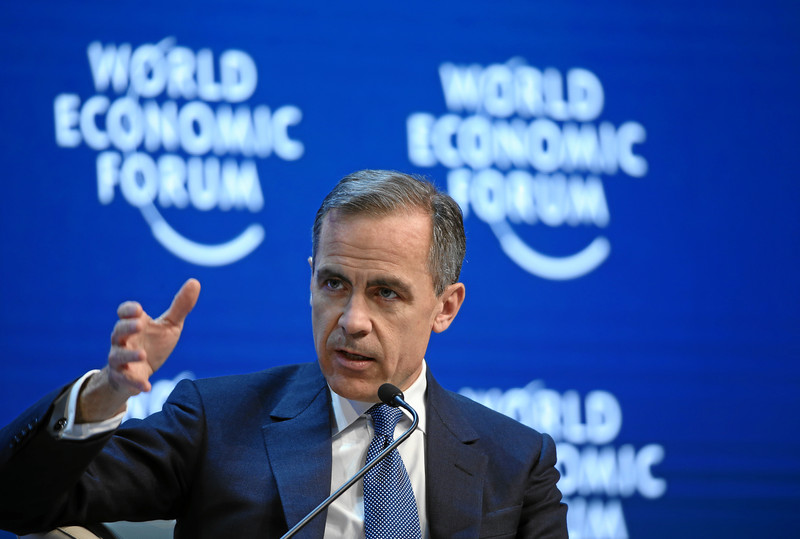Alberta
Cannabis companies weigh pricing strategies after OCS margin cut

TORONTO — Canopy Growth Corp. will hold its prices as licensed pot producers weigh whether to pass along to consumers the savings from the Ontario Cannabis Store’s forthcoming margin decrease.
The Smiths Falls, Ont. cannabis company behind the Tweed, Ace Valley and 7Acres brands isn’t budging on what it will charge because the pot market is already “highly competitive,” chief executive David Klein said in a statement to The Canadian Press.
Canopy declined to say more about the pricing decision, which comes after it laid off 800 workers and the company reporting a $266.7 million net loss in its third quarter.
The decision comes after the OCS, the province’s pot distributor, said last week that it would reduce the margins it makes on weed sales this September in a move expected to put $35 million back in the hands of licensed pot companies this fiscal year and $60 million in the 2024 fiscal year.
Companies aren’t required to pass along the savings to consumers by lowering their prices, so many observers believe licensed producers will adopt a range of pricing strategies when the new margins come into effect.
“It’s reasonable to think that some cannabis producers and retailers may decide to decrease their prices after the OCS announcement just to be more competitive, provided that they have the wiggle room in their market margins,” said Sherry Boodram, chief executive of CannDelta Inc., a Toronto cannabis consulting company.
“But certainly in other cases, some producers and retailers may not want to decrease their prices.”
Making that decision is no easy task when many licensed producers are awaiting details about how deep the cuts will be.
However, two industry sources told The Canadian Press the average mark-up will decline to 25 per cent from 28 per cent, though the amount will vary across product categories. The biggest margin reductions will come in the vapes, edibles and beverage categories with more modest decreases to flower, pre-rolls and concentrates.
The Canadian Press is not identifying the sources because they were not authorized to disclose the information.
“At this point, it’s too early for us to comment on pricing,” said Rick Savone, senior vice-president of global government relations at Aurora Cannabis Inc., which makes the Daily Special, San Rafael ’71, Greybeard and Drift products.
“We are waiting for explicit understanding from the OCS about how the pricing changes will be applied.”
Meanwhile, Moncton, N.B.’s Organigram Holdings Inc. refused to discuss its pricing model, but spokesperson Paolo DeLuca says it will ensure prices are attract to consumers and generate a reasonable margin.
Once companies understand the margin changes, Boodram said businesses will have to factor in production and distribution costs for each item, taxation, market competition, profitability and supply and demand.
“There are some businesses that are facing increased competition that have declining sales and that have excess inventory, so for them reducing prices can be a really effective way for them to attract customers and increase demand for their products,” she said.
But lowering prices can also weigh on profitability and the company’s ability to fund other ventures, and send a false signal to consumers that a product is cheaper because it is of lower quality.
“At the consumer level they’re not aware of this OCS announcement and the reasoning behind the price decrease, so they might wonder what’s going on here?” Boodram said.
Cannabis companies, which have endured rounds of layoffs and facility closures in recent years, are also in a particularly tough spot when making pricing decisions because they have already slashed their own margins several times in recent years.
“Several companies are already actively doing price drops, so price drops are very, very popular,” said Lisa Campbell, chief executive at cannabis marketing company Mercari Agency.
The average price for cannabis was $11.78 per gram at the start of 2019, shortly after legalization, but fell to $7.50 per gram in 2021, a report from Deloitte Canada and cannabis research firms Hifyre and BDSA said.
The average price for vape cartridges has similarly fallen by 41 per cent from $32.02 per gram around legalization to $19 per gram a year later.
“In some situations, to be competitive with illicit market prices will have to be reduced more, but I don’t think that that’s going to be the case for all products,” Boodram said.
By the OCS’s count, the illicit market made up 43 per cent of Ontario’s cannabis market last March.
While any margin decrease is helpful for licensed producers, Campbell doesn’t see it having a meaningful effect on the industry’s profitability because the cut isn’t big enough and OCS margins have steadily increased since legalization.
Shoppers are also unlikely to bat an eye.
“I don’t think the consumer is thinking too much about it,” she said.
“I don’t think it’s really going to be a significant change.”
This report by The Canadian Press was first published Feb. 22, 2023.
Companies in this story: (TSX:WEED, TSX:ACB, TSX:OGI)
Tara Deschamps, The Canadian Press
Alberta
Sylvan Lake football coach fired for opposing transgender ideology elected to town council

From LifeSiteNews
Taylor ‘Teej’ Johannesson was fired by H.J. Cody High School in Sylvan Lake because he spoke out against gender confusion, but the community rallied to support him.
A Central Alberta high school football coach who was fired for sharing his views opposing transgender ideology on social media has been vindicated by members of his community, who voted him in to be a town councilors.
As reported by LifeSiteNews earlier this year, coach Taylor ‘Teej’ Johannesson was fired by H.J. Cody High School in Sylvan Lake, Alberta, by school principal Alex Lambert because he spoke out against gender-confused youth who “take their hatred of Christians” to another level by committing violent acts against them.
Many in his community, which is located in a traditionally conservative area of Alberta, rallied to support Johannesson and even had a GiveSendGo campaign for him at one point.
Saying of his win, as noted in a Western Standard report, Johannesson described it as being vindicated, noting how his wife told him, “You’re vindicated — the good wins now. God closed one door and opened a bigger one.”
Last month, Alberta had municipal elections province-wide, and Johannesson ran for a seat on the Sylvan Lake town council. After the results were tallied, he won a seat on the council, noting how he ran for office to fight against the creep of the woke agenda on society.
Johannesson said that he ran for the same council four years ago “purely on an anti-vaccine platform,” saying he was “pissed off at the mandates.”
He said he decided to run for town council as a Christian conservative so he could share his pro-family beliefs with people in the town, so “everyone knows who I am and what my beliefs, morals, and values are, so that way, if I get elected, I could just keep being that way.”
He noted how he received a lot of “hate and slander” from many people, including many in the school, because of his beliefs. However, their plan against him backfired.
“That school tried to bury me, and instead they lifted me,” he said, adding that going from fired football coach to town councillor in “two months was pretty good.”
As reported by LifeSiteNews, Johannesson earlier this year sent a legal demand to his former school board demanding he get his job back.
The legal demand letter, which was sent to school officials last week, reads, “Given that Mr. Johannesson’s expression in the TikTok Video was not connected to his volunteer work, the principal and the division have no authority to regulate his speech and punish him by the Termination decision, which is ultra vires (“beyond the powers.)”
Teej has been in trouble before with the school administration. About three years ago, he was called in to see school officials for posting on Twitter a biological fact that “Boys have a penis. Girls have a vagina.”
Alberta
National Crisis Approaching Due To The Carney Government’s Centrally Planned Green Economy

From Energy Now
By Ron Wallace
Welcome to the Age of Ottawa’s centrally planned green economy.
On November 13, 2025, the Carney government announced yet another round of projects to be referred to the newly created Major Projects Office (MPO) established under the authority of the Building Canada Act (2025). That Office, designed to coordinate and streamline federal approvals for infrastructure projects deemed by Cabinet to be in the “national interest”. The announcement made scant reference to the fact that most of the referred projects had already received the regulatory permits required for construction or are, in several cases, already well under way.
Meanwhile, the aspirations of Alberta’s Premier Danielle Smith were not realized with a “Memorandum of Understanding” (MoU) signed with the Carney government before the 112th Grey Cup in Winnipeg. It remains to be seen if Canada and Alberta can in fact “create the circumstances whereby the oil and gas emissions cap would no longer be required” and if these negotiations will result in a “grand bargain” with the federal government. For its part, Alberta has signaled a willingness to change its industrial carbon tax program to encourage corporations to invest in emissions reduction projects while Alberta’s major energy producers have signalled that they are willing to consider carbon capture and methane reduction within an agreed industrial carbon pricing scheme. Notwithstanding concerns about its financial and technical viability, the Pathways Alliance Project appears to have become a cornerstone of Alberta’s negotiations with the federal government.
In early 2025 Premier Smith issued a list of nine demands accompanied by a six month ultimatum demanding the federal government roll back key elements of its climate policy. Designed to re-assert Alberta’s autonomy over natural resources, Smith’s core issues centered on the repeal of Bill C-69 (the “no new pipelines act) and Bill C-48 (the Oil Tanker Moratorium Act) scrapping the proposed Clean Electricity Regulations and abandonment of the net-zero automobile mandate. In face of a possible refusal by Ottawa to deal with these outstanding issues, Premier Smith launched a “Next Steps” panel as a province-wide consultation to “strengthen provincial sovereignty within Canada” – a process that could possibly lead to a referendum on Alberta’s future within Confederation.
Subsequently, in early October, Premier Smith also announced that her government, in collaboration with three pipeline industry partners, would advance an application to the Major Projects Office for a new oil pipeline from Alberta to a marine terminal on the northwest coast of British Columbia. The intent of the application is to have this new pipeline designated as a ‘project in the national interest’ to receive an accelerated review and approval timeline. Alberta is planning to submit that application in May 2026 to address the five criteria set by Ottawa for national interest determinations. Notably, the removal of what Premier Smith has termed ‘bad laws’ would be a prerequisite to construction of this proposed project.
As the Carney government continues its complex dance around these issues it remains to be seen how, or if, Smith’s demands for Canada to roll back federal legislation will be met. While Premier Smith staunchly advocated for the removal of what she termed to be the ‘bad laws’ standing in the way of the “ultimate approval” of a pipeline to the B.C. coast it remains to be seen if the Carney government will to accede to most, or even any, of these demands in ways that could clear the way for a new oil export pipeline from Alberta. At a time when the Carney government appears to be doubling down on its priority to reduce Canadian emissions it remains to be seen if Alberta can in fact increase oil production without increasing emissions.
Liberal MP Corey Hogan, who serves as parliamentary secretary to the Minister of Energy and Natural Resources the Honourable Tim Hodgson, noted that: “So as long as we can get to common understandings of what all of those mean, there’s not really a need for an emissions cap.” This ‘common understanding’ may signal a willingness by Ottawa to set aside the Trudeau government’s signature proposed oil and gas emissions cap in exchange for major carbon capture and storage projects in Alberta that would be combined with strong carbon pricing and methane regulations.
While this ‘common understanding’ may yet lead to a ‘grand bargain’ it would nevertheless effectively create two different classes of oil in Canada, each operating under different sets of regulations and different cost structures. Western Canada’s crude oil producers would be forced to shoulder costly and technically challenging decarbonization requirements in face of a federal veto over any new oil projects that weren’t ‘decarbonized.’ Canadian-produced oil would be faced with entering international export markets at a significant, if not ruinous, competitive disadvantage risking not only profitability but market share. Meanwhile, this hypocritical policy would allow eastern Canadian oil refiners to import ‘carbonized’ oil from countries with significantly looser environmental standards.
Carney’s November 2025 “Canada Strong” federal budget sets out $141.4 billion in new spending over five years with a projected $78.3 billion deficit for 2025–26. As Jack Mintz points out, while that budget claims to be “spending less to invest more”, annual capital spending will double from $30 billion a year to $60 billion a year over five years:
“… as federal program spending, which excludes interest on debt, is forecast to rise by 16 per cent from $490 billion this fiscal year to $568 billion in 2029-30. During the current year alone, the spending increase is a remarkable seven per cent. Public debt charges will soar by 43 per cent from $53 billion to $76 billion due to growing indebtedness and higher interest rates. No surprise there. Deficits — $78 billion this year alone — accumulate by a whopping $320 billion over five years.”
Since 2015 Canada has experienced a flight of investment capital approaching CAD$650 billion due to lost, or deferred, resource projects – particularly in the energy sector. While many economists recognize that Canada’s fiscal status may be worse than it appears, the Carney government is asking Canadians to ignore these figures while they implement industrial policies that, for all intents and purposes, represent a significant regression into central planning. The ‘modernization’ of the National Energy Board that began early in the Trudeau government’s mandate appears now to have been but a first step in the progressive centralization of control by the federal government. Gone are the days when an independent expert energy regulator made national interest determinations based upon cross-examined evidence presented in a public forum. Instead, a cabinet cloaked in confidentiality that is clearly inclined toward emissions reduction as its paramount consideration, will now determine and select projects.
This process of centralized decision-making represents a dilemma that confronts not just Premier Smith but the entire Canadian energy sector. The emerging financial debacle in the Canadian EV battery and vehicular manufacturing market is but one example of how centrally planned criteria designed to achieve a Net Zero economy will almost invariably lead to unanticipated, if not economically disastrous, results.
In short, the “green economy” is not working. The Fraser Institute noted that while Federal spending on the green economy surged from $600 million in 2014/15 to $23 billion in 2024/25, a nearly 40-fold increase, the green economy’s share of GDP rose only marginally from 3.1% in 2014 to 3.6% in 2023. Moreover, promised “green jobs” have not materialized at scale while traditional energy sectors vital to Alberta’s and the Canadian GDP have been actively constrained.
This economic reality has apparently not yet dawned in Ottawa. As Gwyn Morgan points out, Prime Minister Carney who, in 2021 with Michael Bloomberg, launched the Glasgow Financial Alliance for Net Zero (GFANZ), has not changed his determination to hike Canadian carbon taxes, proposing to increase the industrial levy from $80 to $170/ton by 2030. GFANZ was created to align global financial institutions with net-zero emissions targets bringing together sector-specific alliances like the Net Zero Banking Alliance (NZBA) and the Net Zero Asset Managers (NZAM). However, early in 2025 GFANZ faced significant challenges as major U.S. banks exited the NZBA followed by the Net-Zero Insurance Alliance (NZIA) that disbanded entirely in 2024 after a wave of member withdrawals. GFANZ was forced to undergo a strategic restructuring in January 2025 to shift from a coalition-of-alliances to a more open, standalone platform focused on mobilizing capital for the low-carbon transition through pragmatic climate financing. ‘Pragmatic’ indeed.
While Carney’s GFANZ has effectively imploded, his government ignores developing new realities in climate policy by continuing to implement the Trudeau government’s green agenda with programs like the Pan-Canadian Framework on Clean Growth and Climate Change. That program contains a plethora of ‘green economy’ measures designed to reduce carbon emissions in parallel with the 2030 Emissions Reduction Plan that commits Canada to reducing greenhouse gases (GHG) to achieve net-zero by 2050.
These policies ignore the recent change of mind by thought-leaders like Bill Gates who acknowledges that “climate change, disease, and poverty are all major problems we should deal with them in proportion to the suffering they cause.” This aligns his thinking with that of Bjorn Lomborg who states:
“Climate change demands action, but not at the expense of poverty reduction. Rich governments should invest in long-overdue R&D for breakthrough green technologies — affordable, reliable alternatives that everyone, rich and poor alike, will adopt. That is how we can solve climate without sacrificing the vulnerable. More countries, including Canada, need to get on board with the mission of returning the World Bank to focusing on poverty. Raiding development funds for climate initiatives isn’t just misguided. It’s an affront to human suffering.”
Philip Cross also expressed hope that 2025 may yet represent a “turning point in a return to sanity in public policy:”
“Nowhere is the change more evident than in attitudes to green energy policies, once the rallying cry for left-wing parties in North America. Support has collapsed for three pillars of green energy advocacy: building electric vehicles to eliminate our need for oil pipelines and refineries; using the financial clout of the Net-Zero Banking Alliance to force firms to eliminate carbon emissions; and legally mandating the shift from fossil fuels to green energy.”
Nonetheless, Prime Minister Carney appears resolute in the belief that Canadian policies for Net Zero are not hobbling investment in the energy sector while choosing to ignore alternative regulatory and investment tools that could make a material difference for the economy. Carney also appears to ignore major Canadian firms like TC Energy that have re-directed investments of $8.5 billion into the U.S. as they cite significant concerns about the Canadian regulatory structure. Similarly, Enbridge has advocated for “significant energy policy changes” in Canada while focussing attention not on new export pipelines but instead to incrementally upgrade capacity within its existing Mainline system network.
Canada’s destiny as a ‘decarbonized energy superpower’ will be largely determined by the serious economic consequences that will result from a sustained ideological push into ‘clean energy’. That said, will this be accomplished by a chaotic, ever-more centralized process of decision making, masquerading as a coherent national energy policy?
Conclusion
As Gwyn Morgan has succinctly written, it remains to be seen if the Carney government will be willing to make a “climate climbdown” in face of the reality that net zero goals are being broadly abandoned globally or will they continue to sacrifice the Canadian economy to single-minded, unrealistic or unattainable, goals for emissions reduction?
To date none of the projects referred by the Carney government to the Major Projects Office has been designated as ‘being in the national interest’. Moreover, the Alberta bitumen pipeline advocated by Premier Smith has not yet appeared on any list. Nonetheless, she apparently remains resolute in maintaining negotiations with Ottawa stating: “Currently, we are working on an agreement with the federal government that includes the removal, carve out or overhaul of several damaging laws chasing away private investment in our energy sector, and an agreement to work towards ultimate approval of a bitumen pipeline to Asian markets.”
As Alberta’s ultimatums and deadlines to Ottawa pass, it would be reasonable to question whether Premier Smith is, in fact, being confronted with the illusory freedom of a Hobson’s choice: Either Alberta must accept, at unprecedented cost, Ottawa’s determination to realize Net Zero or it will get nothing at all. While she may be seeking federal support to enable, or accelerate, construction of new pipelines, all Ottawa may be willing to concede is a promise to do better with an MoU that would ultimately impose massive costs for ‘decarbonization’ on Alberta while eastern Canada imports oil from other, less constrained, jurisdictions. Is this a “Grand Bargain?”
Budget 2025 has introduced a Climate Competitiveness Strategy for nuclear, hydro, wind and grid modernization that projects over CAD$1 trillion in spending over five years. It also reaffirms a commitment to increase carbon taxes by $80-$170/tonne for CO2-equivalent emissions by 2030. Since it appears committed to maintaining, or even expanding, Trudeau-era green legislation, some might question any commitments from the Carney government to enter into an even-handed debate on Canadian energy policies that are so critical to Alberta’s energy sector? As the Fraser Institute points out:
“The Canadian case shows an even greater mismatch between Ottawa’s COP commitments and its actual results. Despite billions spent by the federal government on the low-carbon economy (electric vehicle subsidies, tax credits to corporations, etc.), fossil fuel consumption increased 23 per cent between 1995 and 2024. Over the same period, the share of fossil fuels in Canada’s total energy consumption rose from 62.0 to 66.3 per cent.”
While the creation of the MPO may give the appearance of accelerating projects deemed to be in the national interest it nonetheless requires a circumvention of an existing legislative base. This approach further enhances a centrally-planned economy and presupposes that more, not less, bureaucracy will somehow make Canada an “energy superpower”.
Canada continues to overlook rising economic challenges while pursuing climate goals with inconsistent policies. As such, it risks becoming an outlier in energy policy at a time when the world is beginning to recognize the immense costs and implausibility of implementing policies for Net Zero.
Premier Danielle Smith may yet face a pivotal moment in Alberta’s, and possibly Canadian, history. If Ottawa’s past performance is but a prologue, predictions of a happy outcome may require a significant dose of optimism.
Ron Wallace is a former Member of the National Energy Board.
-

 Business2 days ago
Business2 days agoLiberal’s green spending putting Canada on a road to ruin
-

 Alberta23 hours ago
Alberta23 hours agoCalgary mayor should retain ‘blanket rezoning’ for sake of Calgarian families
-

 Business2 days ago
Business2 days agoCarney doubles down on NET ZERO
-

 espionage1 day ago
espionage1 day agoTrump says release the Epstein files
-

 Bruce Dowbiggin21 hours ago
Bruce Dowbiggin21 hours agoSports 50/50 Draws: Make Sure You Read The Small Print
-

 Alberta20 hours ago
Alberta20 hours agoNational Crisis Approaching Due To The Carney Government’s Centrally Planned Green Economy
-

 COVID-1921 hours ago
COVID-1921 hours agoNew report warns Ottawa’s ‘nudge’ unit erodes democracy and public trust
-

 Censorship Industrial Complex21 hours ago
Censorship Industrial Complex21 hours agoQuebec City faces lawsuit after cancelling Christian event over “controversial” artist









